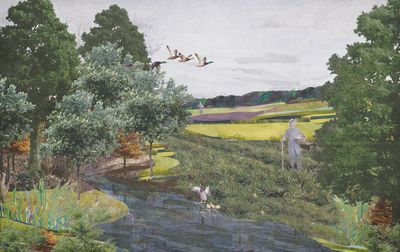Landscapes of Water: Towards a Resilient Hydrological TransitionJi Min An, Robert Bourke, and Maria Jose Castañeda Valbuena

Switzerland is the most water-abundant country in Europe, with large natural reservoirs in the form of glaciers, snow, rivers, and lakes. This essential resource is intensively used, and often negatively affected by anthropogenic processes of extraction, pollutant inputs, and draining of what were once wetlands. Population growth, urbanisation, land-use changes, and economic development continue unabated at the expense of natural processes that regulate the hydrological dynamics of the territory.
This dilemma is further augmented by the effects of climate change as the rise in temperature disrupts the fundamental hydrological constants of the Swiss waters, largely affected by seasonal water availability, higher water temperatures, and changes in stream flow (Federal Office of the Environment, 2021). As a consequence, higher intensity and increased frequency of natural hazards are expected such as floods and mudslides, along with extreme temperatures, high levels of precipitation in winter, and drought risk in summer (FOEN, 2021). As the global population is confronted with the harrowing scenarios proposed in the latest IPCC Report 2022, it is imperative to break away from the past water management paradigm to reimagine a more hydrologically resilient future with a sense of urgency and agility.
How do we adapt our growing cities to be more resilient to flooding, drought, water availability, and extreme heat?
What are the long-term solutions that can also aid in enhancing the life in the city while providing relief to the outdated, heavily engineered infrastructural solutions that have been stretched to their limits?
Through an investigation of the watershed draining the Louve and Flon rivers that once flowed through the heart of Lausanne, this territorial project seeks to identify the weak hydrological continuities in the territory and thereby re-establish the water as a structuring, life-giving element in the city.
Nature-based methods are proposed to protect, slow down, collect, and release the water safely in the layers of the urban tissue while strengthening the weak biodiversity corridors. In this manner, the project aims to restore a healthy, resilient water cycle that reduces the pressure on the existing infrastructure as well as transforming the city’s social and cultural life.
Fieldwork video of the Louve and Flon rivers.